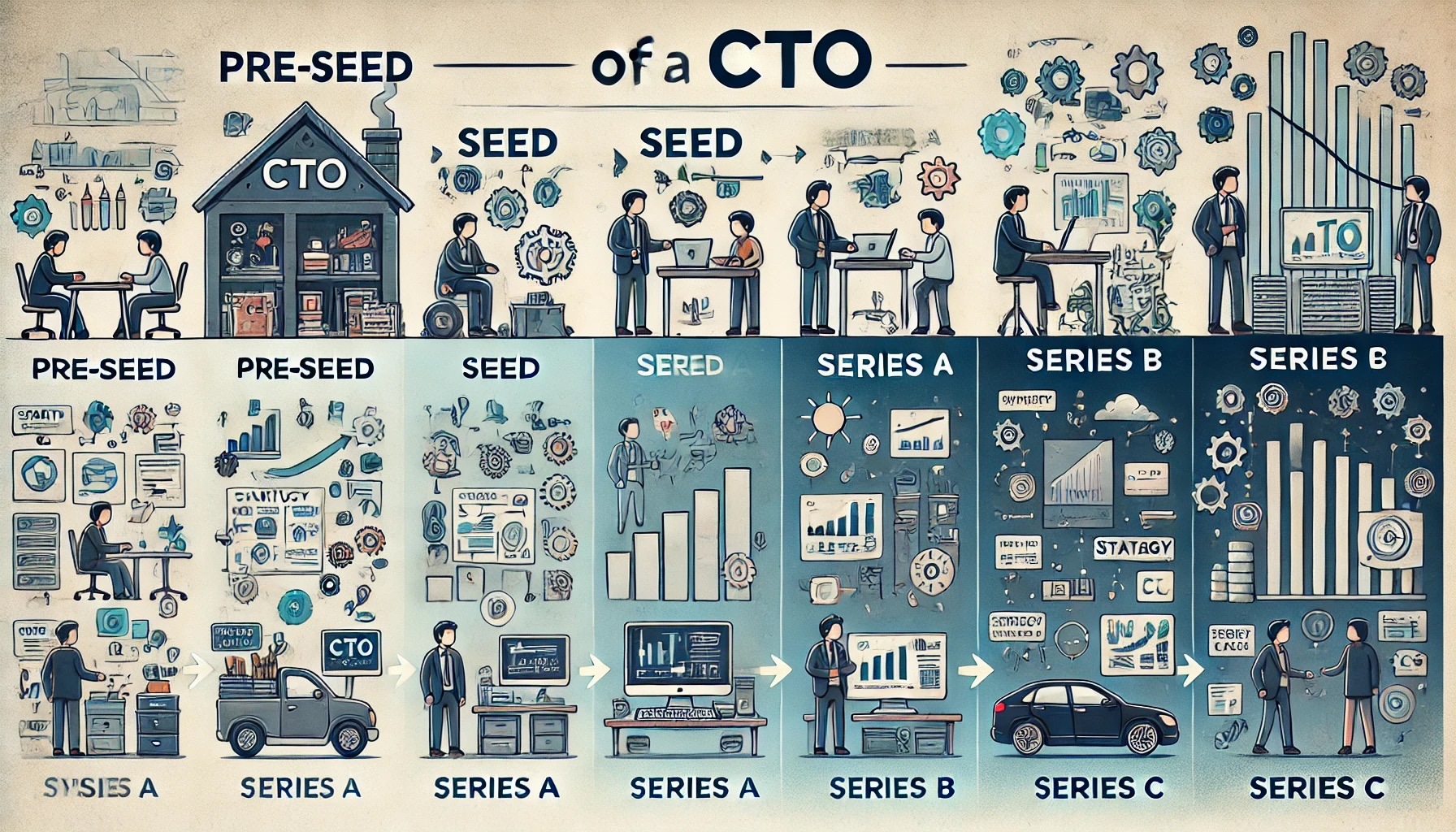The Evolving Role of a Startup CTO: From Seed to Scale
 Nikhil
Nikhil
Introduction
As a fellow CTO, I've experienced firsthand the dynamic and challenging journey of leading technology in a growing startup. The role of a CTO is far more than being the "head coder" - it's a complex web of responsibilities that evolves as your company grows. In this post, I'll share insights on how the CTO role changes from seed funding to Series C and beyond, addressing key challenges and strategies for success.
The CTO Growth Cycle
From Maker to Executive
The "Startup CTO" has a clear progression:
The Maker (< 6 engineers, < $.7M ARR, seed funding)
Focus: Hands-on coding, building MVP
Key challenge: Balancing immediate technical needs with long-term vision
The Expert (5-15 engineers, $1-5M ARR, Series A)
Focus: Technical leadership, architecture decisions
Key challenge: Transitioning from individual contributor to team leader
The Manager (15-50 engineers, $5-10M ARR, Series B)
Focus: Team building, process implementation
Key challenge: Scaling engineering practices and culture
The Executive (50+ engineers, $50M+ ARR, Series C+)
Focus: Strategy, cross-functional leadership
Key challenge: Balancing innovation with operational stability
Evolving Responsibilities
As you progress through these stages:
Your time shifts from coding to strategy and leadership
Your focus expands from product features to company-wide technology vision
Your role in decision-making becomes more strategic and less tactical
Challenges of the Modern CTO
The "Challenges of a Modern CTO" diagram highlights the multifaceted nature of the role:
Data Ownership: Ensuring proper data governance and leveraging data for business insights
Security: Implementing robust security measures to protect company and customer data
Technology Vision: Driving innovation while maintaining operational stability
Customer Metrics: Aligning technology decisions with customer needs and business outcomes
Balancing Technical and Managerial Duties
Gradually transition from hands-on coding to architectural oversight and team leadership
Stay technically relevant through code reviews, architecture discussions, and continuous learning
Delegate day-to-day coding tasks while retaining the ability to dive deep when necessary
Strategic Focus Across Company Stages
The "CTO Focus per Company Stage" provides valuable insights:
Start-up Phase
Focus: Building MVP, proving technology viability
Key metrics: Development speed, product-market fit indicators
Stabilization Phase
Focus: Scaling infrastructure, implementing best practices
Key metrics: System reliability, development efficiency
Expansion Phase
Focus: Supporting rapid growth, enabling new product lines
Key metrics: Scalability, time-to-market for new features
Dominance Phase
Focus: Maintaining market leadership, driving innovation
Key metrics: Innovation rate, technology differentiation
Interdisciplinary Collaboration
Regular sync-ups to understand product-market fit and customer needs
Work closely with finance on technology budgets and ROI of tech investments
Collaborate with operations team on operational efficiency and scaling challenges
Long-Term Vision and Innovation
Implement a framework for evaluating and prioritizing innovation projects
Allocate resources for exploratory work and R&D
Create a culture that balances "keeping the lights on" with pushing technological boundaries
Hiring and Scaling Engineering Teams
Develop a hiring strategy that evolves with your company's growth stage
Focus on cultural fit and learning ability in the early stages
Prioritize specialized skills and leadership potential as you scale
Technical Debt Management
Regularly assess and communicate the impact of technical debt
Implement processes to prevent the accumulation of new technical debt
Allocate resources for debt reduction as part of your development cycle
CTO's Role in Fundraising
Articulate your technology vision and roadmap to investors
Demonstrate how technology drives business value and competitive advantage
Be prepared to discuss scalability, security, and innovation potential
Ethical Considerations in Technology Leadership
Develop and enforce ethical guidelines for technology development
Foster a culture of responsible innovation within your team
Stay informed about the ethical implications of emerging technologies
Conclusion
The journey from a hands-on technical founder to a strategic technology executive is challenging but rewarding. By understanding how your role evolves and proactively adapting your focus and skills, you can effectively lead your startup's technology function from seed to scale and beyond.
Remember, there's no one-size-fits-all approach to being a CTO. The key is to remain adaptable, keep learning, and always align your technology strategy with your company's overall vision and goals.
Subscribe to my newsletter
Read articles from Nikhil directly inside your inbox. Subscribe to the newsletter, and don't miss out.
Written by
